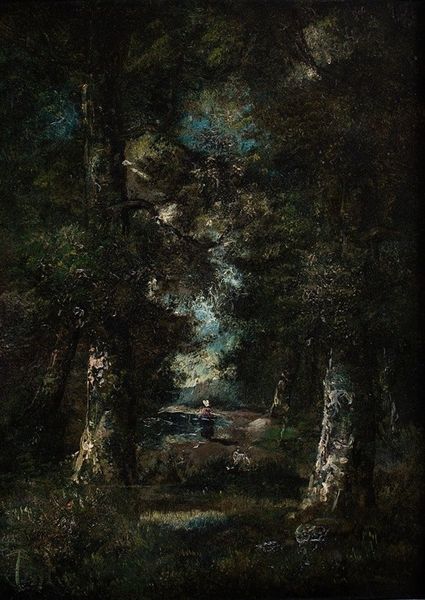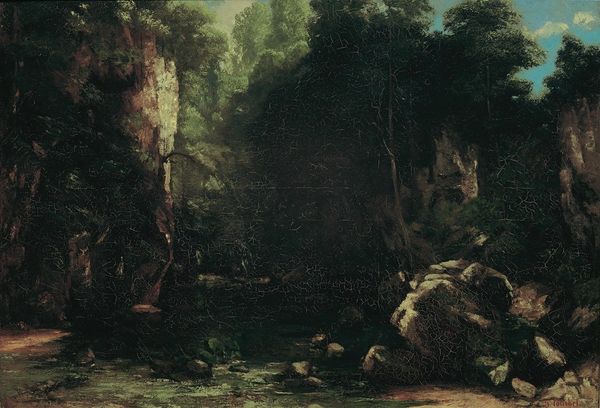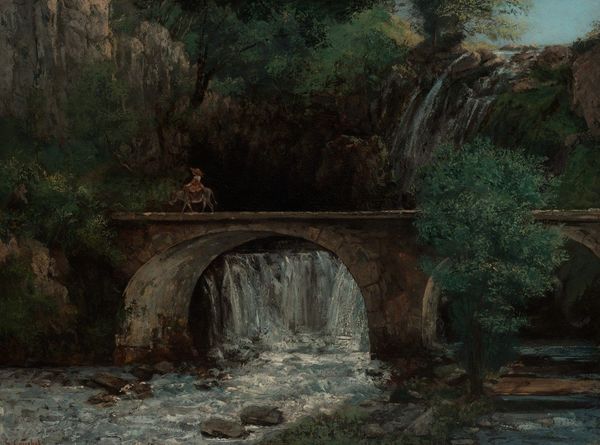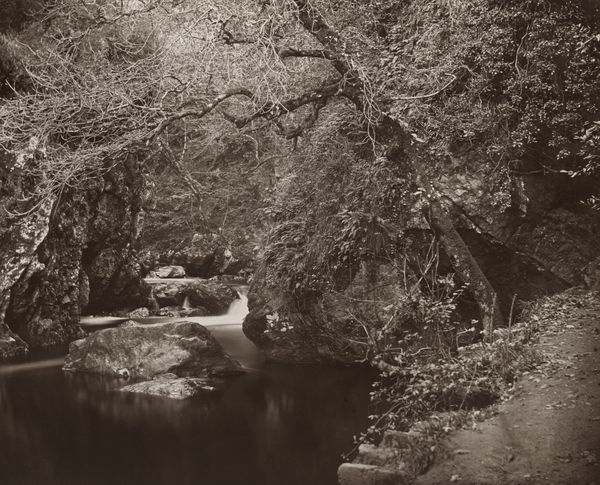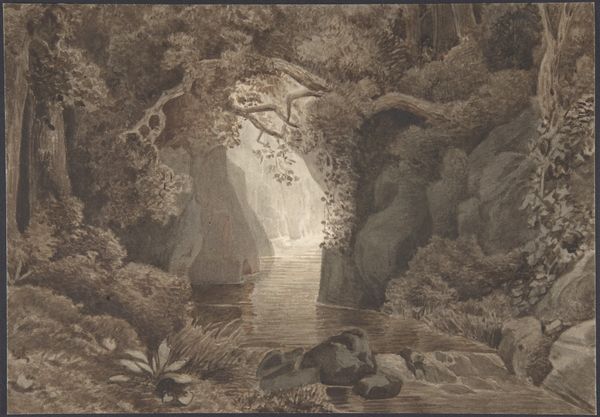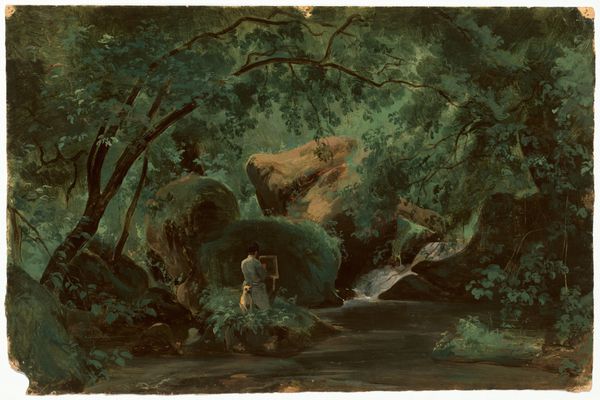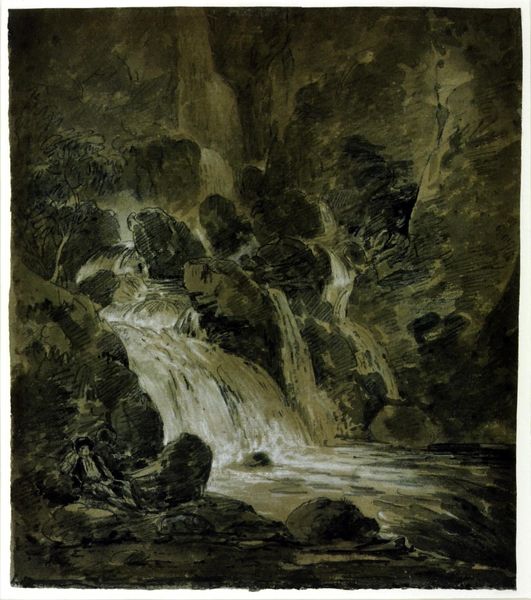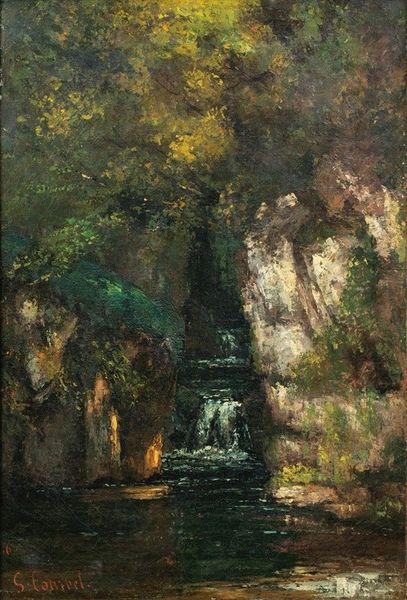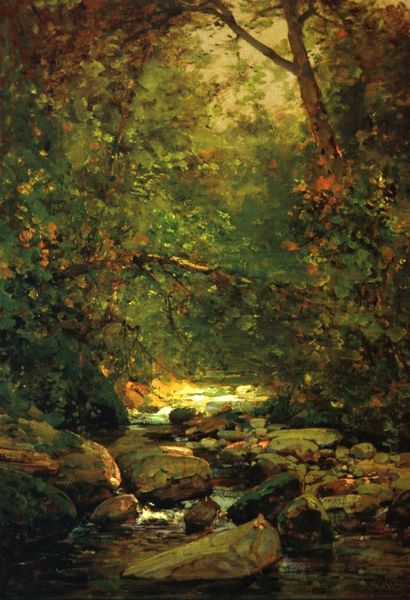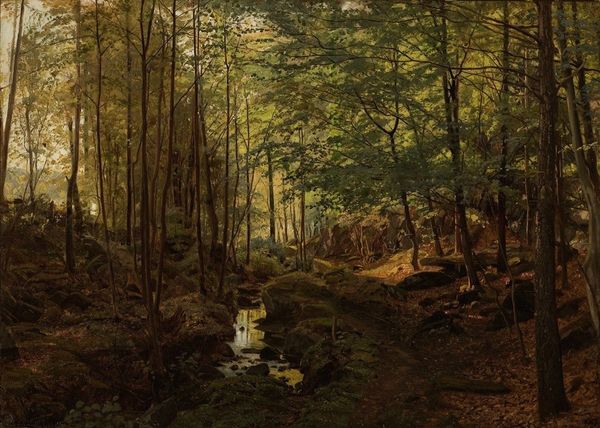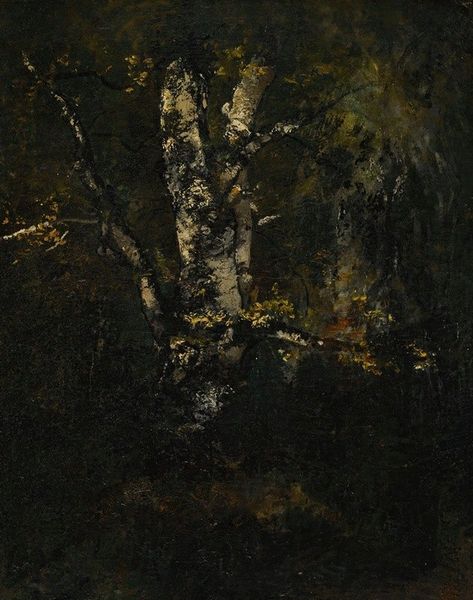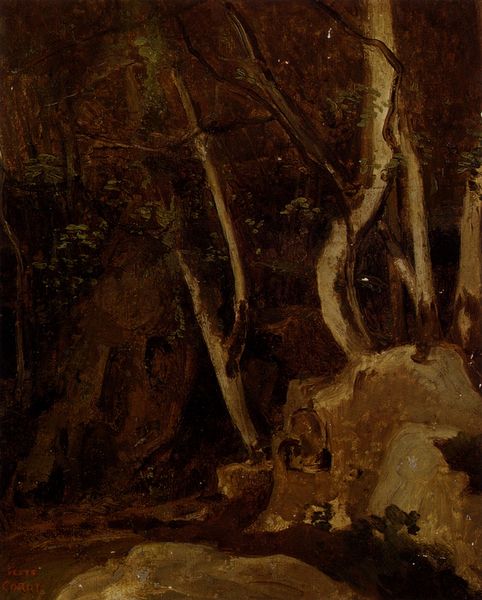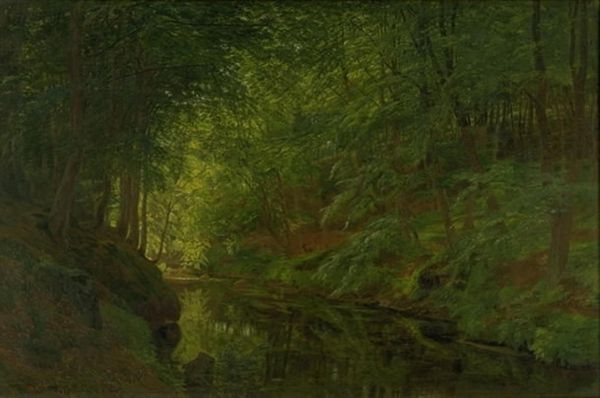
painting, oil-paint
#
painting
#
oil-paint
#
landscape
#
romanticism
#
realism
Copyright: Public Domain: Artvee
Curator: Looking at this artwork by Gustave Courbet titled "Paysage sans ciel," it certainly evokes a specific feeling, doesn't it? Editor: Yes, I am immediately struck by its somber, almost melancholic mood. The predominantly dark palette, combined with the obscured view of what appears to be a grotto, create a sense of enclosure, a feeling of being immersed in the depths of something. Curator: Absolutely. Courbet was, of course, operating in a period where landscape painting served diverse cultural functions. This particular artwork demonstrates elements that straddle both the Romantic and Realist movements. On the one hand, it expresses that Romantic sensibility towards the sublime and the awe-inspiring power of nature; but it simultaneously seeks to offer the viewer a truthful depiction of the natural world, aligned with Realist ideals. Editor: I see that. And note how the composition itself reinforces the subject. The darker colors are clustered towards the center and the top of the painting, directing our eyes downwards to the reflective surface of the water. What would you say the textural variation contributes? Curator: Well, during the mid-19th century in France, rapid industrialization brought enormous social upheavals that influenced art, which reflected increased political and class consciousness. Courbet had very defined views about representing social realities, even in something seemingly apolitical as landscape. "Paysage sans ciel" seems, for me, an allegory of a world engulfed in shadow and its effect on human emotions and societal structure, a response to modern challenges perhaps. Editor: Interesting interpretation! Though I remain fascinated by how Courbet plays with the contrast between light and dark, accentuating details. The light striking the rocky surfaces and water adds subtle movement and guides our attention to that part of the piece, giving some solace amidst darkness. It’s almost cinematic in that it directs your gaze like a film still would. Curator: That artistic control allows the audience to view it and internalize their feelings in the era. He uses what is in his world for this period to make an argument. And that landscape includes many challenges to its structure and the societal makeup of the country. Editor: Yes, though while you analyze context I get immersed into pure technique; both offer powerful pathways. Curator: Indeed. What a valuable lesson this art teaches; it underscores the powerful impact that a single landscape image can carry across time, evoking everything from an immersive mood to broad socio-historical perspectives. Editor: Absolutely. We are only as interesting and multifaceted as what inspires us to express our ideas and thinking!
Comments
No comments
Be the first to comment and join the conversation on the ultimate creative platform.
